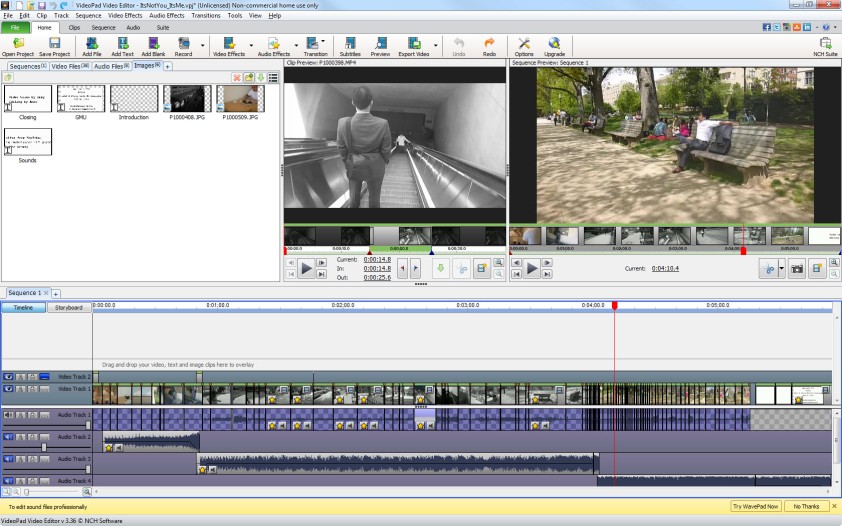For one of this week’s Video Assignments, I chose to Tell a Story without Dialogue. The title of the story is “It’s not you, it’s me” named after the dreaded line that any guy or gal loathes to hear on the other end of a phone line or an awkward coffee table. A more recent encounter with this phrase inspired the video and the story is about a person who starts off his day like normal, assuming all is well and normal until he checks his mail and receives “the line.” The world turns to grey and through body gestures, pauses, perspective, he comes to a realization that he shouldn’t dwell and that there are others around to support him. He loosens the constraints of his work attire, representing the confines of emotion and self to which he has resigned himself and finds new friends in strangers in the park who support him on a slack line, a metaphor for balancing life and how we can’t do it alone.
I used the B/W and “Happy” (color) settings on my Panasonic DMC-TS20 to record the video. I used a tripod to take the shots in my apartment and recruited a friend to take footage of my walk through “days” (title of the song playing during the black & white footage). When I read Ebert’s points on reading movies, what stood out to me was the notion that a rightward direction represented the future, so most of the footage of me walking is forward and to the right, to represent forward motion, versus the helplessness, sadness, and resignation that Ebert associated with tilting the left. The idea of the upward angle to the right with most of the the initial walking was to suggest moving forward, moving on. Coincidentally, the two scenes entering the park showed a upward, but leftward approach to the park, which also timed well with a lull, almost resigned, tempo on the song. This was temporary as the tempo picked up heading to the transition to color.
The color scheme was pretty simple. Whenever Coldplay’s “Life in Technicolor” played, there was color, life, and joy, be it in the daily process or the ending scenes. When the character receives the note, he enters into a black and white world where the joy of color is almost removed by a shift in mood. Throughout the video, split segments into pieces deleting every other slice to create a jumping effect which I smoothed with crossfade transitions. This served the purpose of trimming down total time of footage, but also created the effect of time passing as the subject remained still while people and things around him moved. At one point near the end, I slowed down the video as the character paused to look at roses. This effect was to provide a hint to the viewer as to what might be going on in the character’s mind. All these effects, coupled with the tempo, tone, and message of the song played well together.
One other aspect of the film that I tried to include was that you couldn’t see the character’s face for most of the video until the 2nd half when he comes to his realization and sees the color in the world around him. The intent was to allow the audience to try and guess what was on his mind based on everything else BUT his face. Him scratching his head, pausing for the roses, putting his hands in his pockets, looking down to the ground…what does these things say about his thoughts and his feelings. Towards the end, we see him on the park bench, arms open, comfortable and happy in the sun and around people. An unintentional aspect of the ending of the Coldplay song, he sings “…no my feet won’t touch the ground…” which matched up with the character slack-lining above the ground with help from a new friend.



Add a comment